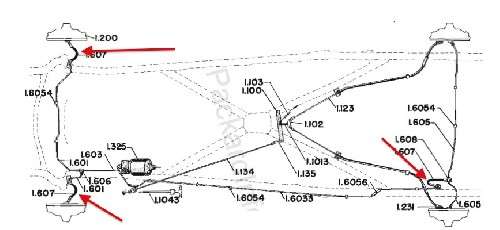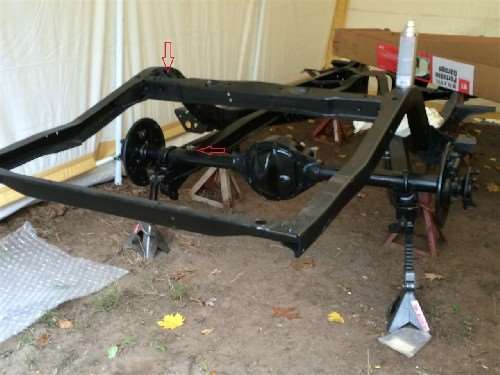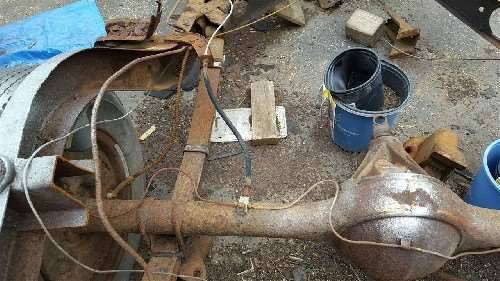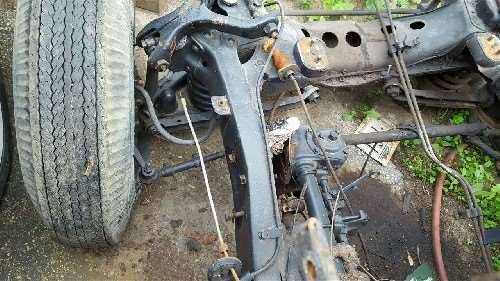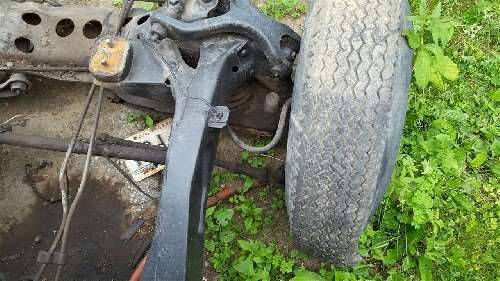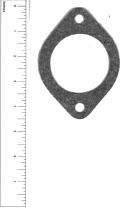|
Re: Brake Hose Diagram
|
||||
|---|---|---|---|---|
|
Home away from home
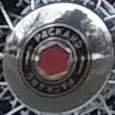
|
If the '55's are anything like the '54's (and I think they are) the rear brake hose will be on the left (driver's) side and connects the metal brake line that feeds the rear wheel cylinders and runs along the top of the rear axle case with the metal line that runs along the frame from up front. The hose should be easily visible, look for it just in front of the rear axle. The hose should be identical with the front hoses, so the hoses in a three hose set can be installed in any location.
Posted on: 2015/6/28 0:32
|
|||
|
Don Shields
1933 Eight Model 1002 Seven Passenger Sedan 1954 Convertible |
||||
|
||||
|
Re: Brake Hose Diagram
|
||||
|---|---|---|---|---|
|
Forum Ambassador
|
And as far as a Packard illustration I believe the plate from the 55-6 parts manual will be about as good as it gets. Packard didn't provide many detailed photos or illustrations unless it was something brand new the mechanics hadn't seen before. Here is the illustration for power brakes with arrows pointing out the 3 hoses. Lines will be slightly different but the hose layout will be identical if you have manual brakes instead.
Posted on: 2015/6/28 8:28
|
|||
|
Howard
|
||||
|
||||
|
Re: Brake Hose Diagram
|
||||
|---|---|---|---|---|
|
Home away from home

|
HH56: Thanks for posting that diagram.
This is currently relevent to me because I am re-engineering the brakes on my Panther. As some will recall, it is a 4 wheel disc setup with modern booster (MPB 7IN dual diaphram) and disc/disc MC (1979 Pontiac Trans Am WS6). Here's something to ponder: In the stock Packard setup, one has 0.200IN steel brake line entirely though out. This means that the MC (usually BTV) is outputing into that line which is about 0.144ID (0.028 tubing wall thickness). The maximum flow rate at this ID is 1.25GPM (according to info on the web). This flow is then split into front and rear lines. Each is then further split at each wheel. So the maximum flow rate to any one wheel is 1.25GPM/4 = 0.313GPM. By example, this is obviously acceptable for a mid-1950s drum/drum arrangement, but it causes one to wonder about a disc/drum or disc/disc conversion wherein the caliper piston probably needs more fluid to actuate than a drum wheel cylinder. On my 1955 Pat, which I converted to disc/drum, I used the stock brake lines, but since I have a dual MC, it has double the stock flow rate and it works fine. But OTOH, I don't usually abuse or stress the brakes on it. My Panther will be a different story. On it, I decided to use 1/4OD (0.250IN) lines from the dual MC outlets to each splitter block (front/rear) which then have 0.200OD lines from their output to the calipers. It is then obvious that this will provide quadruple the flow capability compared to the stock Packard lines. Craig
Posted on: 2015/6/28 12:33
|
|||
|
Nuke them from orbit, it's the only way to be sure! Ellen Ripley "Aliens"
Time flies like an arrow. Frui |
||||
|
||||
|
Re: Brake Hose Diagram
|
||||
|---|---|---|---|---|
|
Home away from home
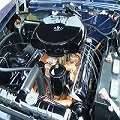
|
Blake, the hose will attach to the brass junction block on the rear axle (left side) and will attach to a union inside a frame clip located at the left wheel arch in the frame.
Posted on: 2015/6/28 17:00
|
|||
|
[url=https://packardinfo.com/xoops/html/modules/
|
||||
|
||||
|
Re: Brake Hose Diagram
|
||||
|---|---|---|---|---|
|
Home away from home

|
If it is similar to a '51 maybe these pics will help.
Posted on: 2015/6/28 19:22
|
|||
|
[url=h
|
||||
|
||||
|
Re: Brake Hose Diagram
|
||||
|---|---|---|---|---|
|
Home away from home
|
Please replace your old steel lines as well. In 40 years of screwing around with old cars I have never seen a brake hose burst (plug, yes, burst, no), but I have seen MANY burst or leaking brake tubes.
I am assuming safety is what you are after; if so, replacing the steel lines is key.
Posted on: 2015/6/28 19:43
|
|||
|
||||


 (41.07 KB)
(41.07 KB)